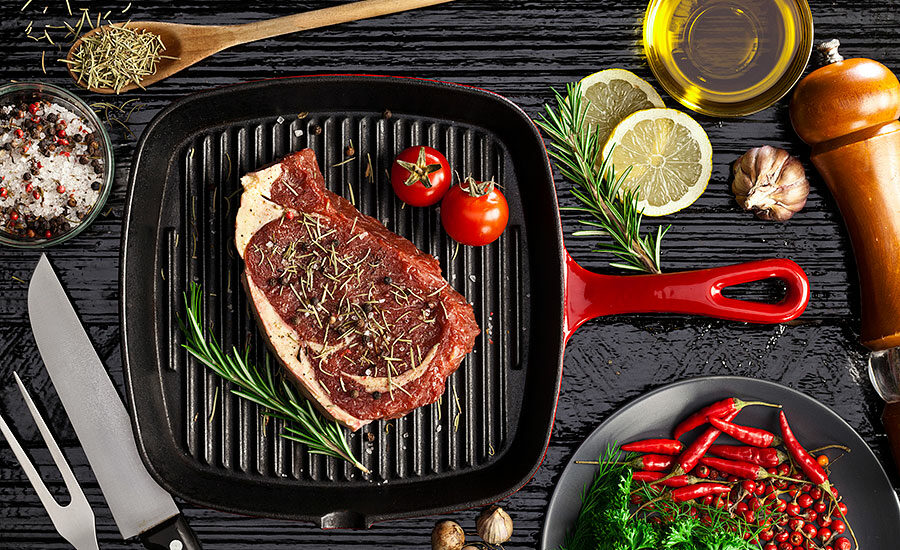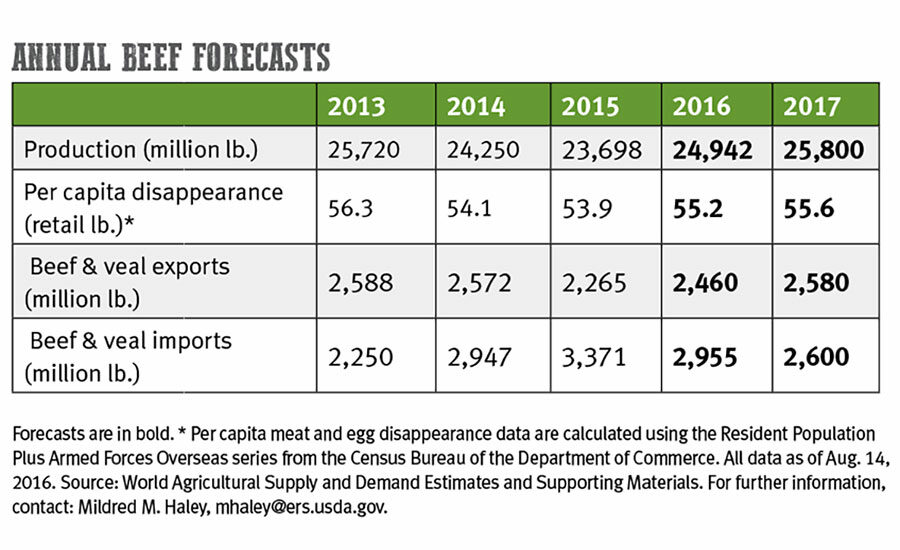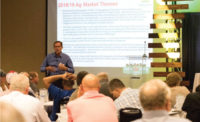State of the Industry
State of Beef: Long-range plan for beef industry underway

The Beef Industry Long Range Plan (LRP) lays out aggressive goals to strengthen the beef industry in the coming five years.

Beef production is forecasted to increase in 2017.


In today’s global marketplace, every successful cattle producer and importer knows the importance of planning when it comes to succeeding in their businesses. The same value holds true for the producers and importers who volunteer to make decisions about how to invest folks’ hard-earned, dollar-per-head investments into the Beef Checkoff Program.
Those decisions are not made in a vacuum. In fact, every decision about investing checkoff dollars into beef promotion, research, education, information and foreign-market development aimed at building consumer demand for beef is directly tied to long-range planning.
In whole, checkoff planning is an integration between research of various types — beef-safety, human-nutrition, product-enhancement, and consumer-market research — because they all come together to provide a roadmap for the future of the beef community.
During the 2015 Cattle Industry Summer Conference in Denver, checkoff leaders adopted a 2016-2020 Beef Industry Long Range Plan (LRP) that was brought to them from a Long Range Plan Task Force comprising 16 representatives from various segments of the beef industry who had been working together to develop a new Long Range Plan since December 2014.
This plan lays out aggressive goals to strengthen the beef industry in the coming five years, many of which are directly pertinent to the goals of the Beef Checkoff Program, in coordination with representatives of the entire beef chain — including restaurant owners and operators, grocers, producers, importers, manufacturers, communicators and more.
“While the beef industry has faced many challenges, the future holds tremendous promise for the industry,” according to Don Schiefelbein, owner/operator of Schiefelbein Farms and task force co-chairman. “The task force took a research-based approach to not only determine where the industry is and how we got here, but also at the trends and issues potentially impacting the beef community so that we can be most successful moving forward.”
The Task Force identified increasing beef demand as the single most important strategic objective for the industry to pursue and established a specific objective to “increase the wholesale beef demand index by 2 percent annually over the next five years” through focus on four core strategies: drive growth in beef exports; protect and enhance the business climate for beef; grow consumer trust in beef and beef production; and promote and strengthen beef’s value proposition.
“The overall vision of the task force was straightforward,” said John Butler, CEO of Beef Marketing Group and task force co-chairman. “Recognizing the growing demand among the world’s middle class for high-quality protein, we want the U.S. beef industry to responsibly produce the most trusted and preferred protein in the world. At this pivotal point in the U.S. beef industry’s history we need to focus our energies and limited resources on those areas that can provide our industry the best results.”
How does the checkoff incorporate the LRP?
- Market Research — Where it all begins. Consumers drive beef demand, so they are in charge. Market research goes directly to the source of what it is that they want and expect from our end products. This is critical in defining what is most important to accomplish and tells us how and to whom to deliver specific beef resources.
- Beef Industry Long Range Plan — Developed every three to five years by representatives from various segments of the industry based on research of consumer trends and market forecasts, by segment. The checkoff targets those Long Range Plan goals that require promotion, research, information and foreign-market development programs that are appropriate for checkoff funding and develops a quarterly “scorecard,” which combines with a Long Range Plan Advisory Group annual review to ensure that checkoff programs stay on track and make meaningful progress toward the goals of the Long Range Plan.
- Annual Industry Scan — Annual review of the latest consumer market research to identify consumer trends and perceptions about beef and the beef industry. Identifies demand drivers, such as taste, value, nutrition & health, safety, and convenience.
- Adaptation to demand drivers — Twice a year, producer leaders meet in committees based on the demand drivers defined in the Long Range Plan and the Industry Scan to plan for the coming months and year. The goal is to identify promotions and other projects that directly focus the findings of the Industry Scan and the goals of the Long Range Plan.
With adoption of the 2016-2020 Long Range Plan, the Cattlemen’s Beef Board and the Federation of State Beef Councils adopted a new set of joint committees to align with the demand drivers addressed in this plan. NP
State of the Industry 2016 segments
| Industry overview | Goes live Oct. 14 |
| Beef (CAB) | Oct. 18 |
| Beef (NCBA) | Oct. 19 |
| Pork (Pork Board) | Oct. 20 |
| Pork (Sun Trust) | Oct. 21 |
| Chicken | Oct. 24 |
| Turkey | Oct. 25 |
| Veal | Oct. 26 |
| Lamb | Oct. 27 |
| Food Safety | Oct. 28 |
| Packaging | Oct. 31 |
Looking for a reprint of this article?
From high-res PDFs to custom plaques, order your copy today!







